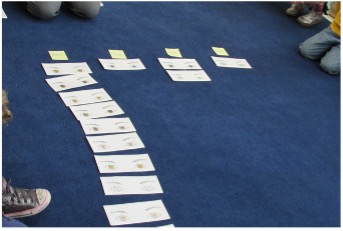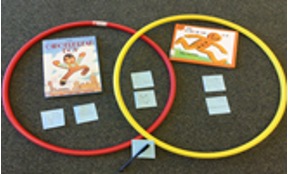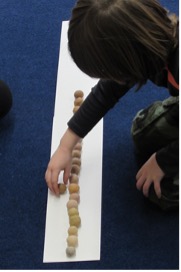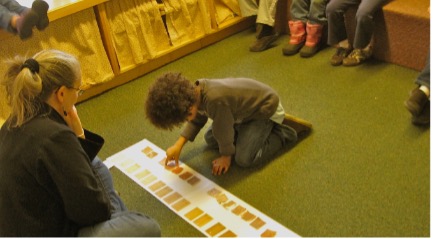Children notice and wonder about the ways in which they are the same as, and different from, others. They are constantly observing and making sense of the data they collect. This is their math minds at work!
Young children develop mathematical constructs and thinking by organizing information from the world around them. They are drawn to the concepts of collecting, sorting, matching, seriating, and graphing as they learn to notice and interpret a variety of attributes. Often they are noticing and categorizing by attributes that are surprising, or even go unnoticed by adults.
Tapping into this natural sense of wonder and order aligns beautifully with our social emotional curriculum, and our first two goals of anti-bias/anti-racist education – identity and diversity. As teachers provide multiple opportunities to invite children’s voices and self-expression, we can also create invitations that support mathematical thinking.
When we invite children to participate in and take classroom surveys, we are inviting them to learn more about one another – their likes and dislikes, their personal lives, their interests, etc. Children love generating survey questions, collecting data, and reporting it back. When we facilitate group discussions and analysis of the information gathered, we are doing both math AND anti-bias/anti-racist work. We are helping children explore how they are alike and different, in a concrete, visual and matter-of-fact way. To do this work effectively we must consider:
Meaningful Questions that Invite Community Building:
- How many people are in your family?
- Do you like . . . ? (yes/no version) Do you like . . . ? (this or that version, or both)
- Are you the oldest, middle, youngest or only child in your family? (First born, second born, third born… ordinal numbers).
- What color are your eyes?
- Etc.

Mathematical Games and Tools to Organize Data and Make Visible Similarities and Differences:
- Make T charts, then discuss comparisons. (Be sure not to weigh one outcome as ‘better,’ ‘winning,’ etc. Sometimes our society equates more with better.)
- Make charts and graphs with multiple categories. They could be of the physical attributes, such as eye color, hair color, hair type, etc., or types of sports, food, games, etc. that children enjoy.
- Make Venn diagrams that challenge children to consider more than one attribute at a time.
- Example: place a family photo on one side if the family likes to dance, on the other side if the family likes to cook, or in the middle if the family enjoys both dancing and cooking.
- Categories can include likes, skills, attributes, etc. Use “some people…” language.
- Play matching and memory games with photos of the children, close-up photos of children’s eyes, family photos, or children and people from around the world.
- Use Beautiful Stuff, paint samples, playdough samples etc. to practice seriation from dark to light.



Teach and Practice Key Vocabulary when Discussing Comparisons:
- Alike, same, similar
- Different, distinct
- Unique, special
- Both, and
- “Some people” (rather than they, them, those people)
- “Me too!”, “Some of us”